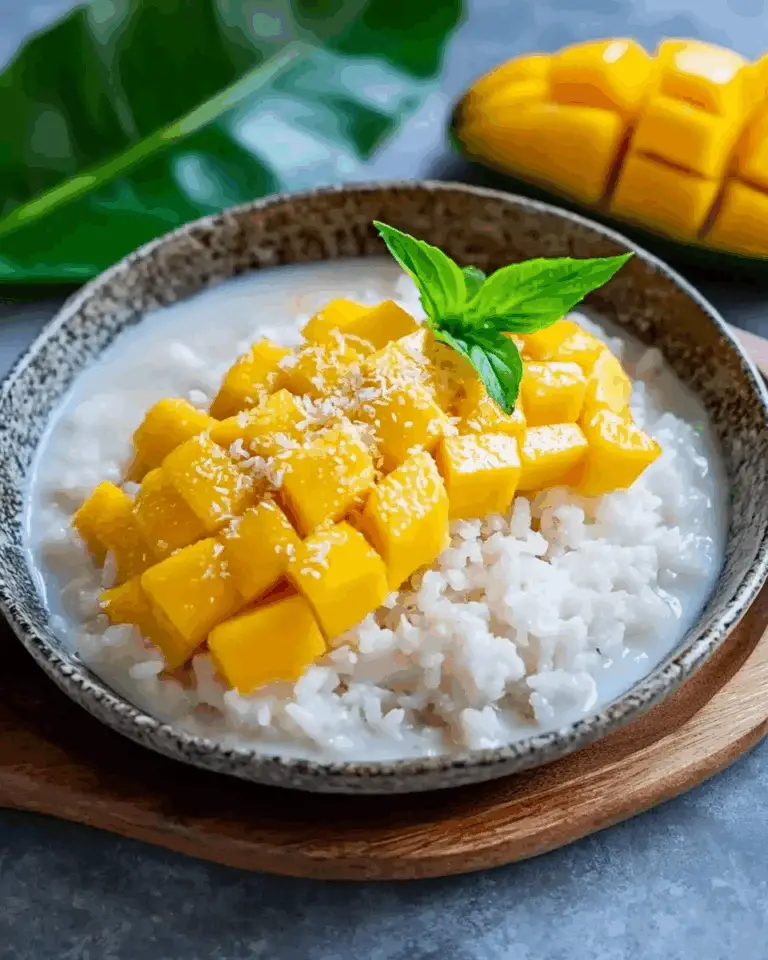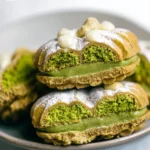Mango Sticky Rice is a beloved Thai dessert made with sticky (glutinous) rice soaked in rich coconut milk and served with sweet, ripe mangoes. This tropical treat is creamy, slightly salty, and perfectly sweet — a comforting combination that makes it a favorite across Southeast Asia.
Full Recipe:
Ingredients
-
1 cup glutinous (sticky) rice
-
1 1/4 cups coconut milk
-
1/3 cup sugar (adjust to taste)
-
1/4 teaspoon salt
-
2 ripe mangoes, peeled and sliced
-
1 tablespoon toasted sesame seeds or mung beans (optional, for topping)
Coconut Sauce (optional):
-
1/3 cup coconut milk
-
1 tablespoon sugar
-
Pinch of salt
-
1 teaspoon cornstarch mixed with 2 teaspoons water (to thicken)
Directions
-
Rinse the sticky rice several times until the water runs clear, then soak in water for at least 4 hours or overnight.
-
Drain and steam the rice in a steamer lined with cheesecloth for 25–30 minutes, or until tender.
-
While rice steams, combine 1 1/4 cups coconut milk, sugar, and salt in a saucepan over low heat. Stir until sugar dissolves, then remove from heat (do not boil).
-
Once the rice is cooked, transfer it to a bowl and pour the coconut milk mixture over it. Stir to combine, cover, and let the rice absorb the coconut milk for 20–30 minutes.
-
For the coconut sauce, mix 1/3 cup coconut milk with sugar, salt, and the cornstarch slurry. Heat gently while stirring until thickened.
-
To serve, plate the sticky rice beside the mango slices. Drizzle with coconut sauce and sprinkle with sesame seeds or mung beans if desired.
Nutrients (approx. per serving, serves 4)
-
Calories: 350 kcal
-
Carbohydrates: 60g
-
Fat: 12g
-
Protein: 4g
-
Sugar: 25g
-
Fiber: 2g
-
Sodium: 100mg






